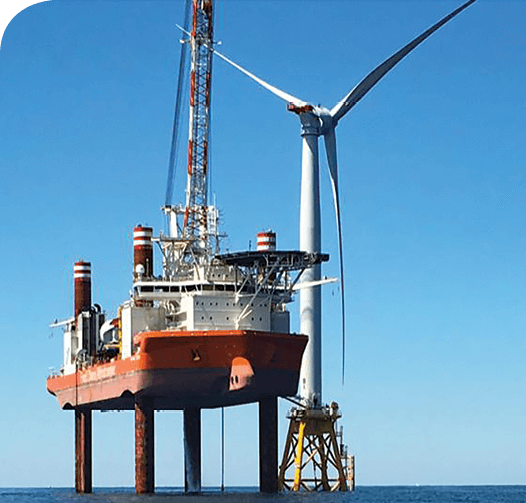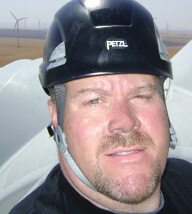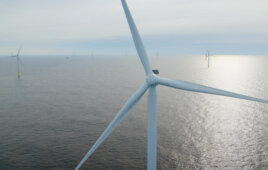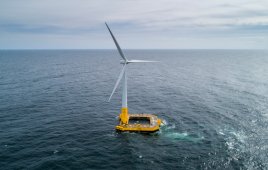David Clark / President / CMS Wind
From an O&M perspective, there are three ways to care for offshore wind turbines:
• Wait until something fails
• Replace components at an intervals
• Predict failures
Guess which is least profitable? Right, wait until something fails. A recent statistic claims that onshore O&M costs have been three times higher than expected due largely to drivetrain failures and subsequent repair, downtime, labor, and lost production. And at onshore sites, it is possible to use a crane. Offshore work, where turbines are potentially inaccessible for long periods because of poor weather, requires a barge or high-lift vessel. Time and equipment are expensive. They eat into profits and drive-up estimated total cost of offshore O&M from the average 15 to 30%. This range does not include lost production from downtime.

Avoiding the crane cost by predicting the failure using CMS drops the per-event cost to $12,000 to $15,000. That is, a single event O&M cost avoidance or saving of $280,000. Offshore, this number jumps significantly per event.
Based on 6 GW of installs, the distribution of drivetrain failures on a wind turbine is about 50% for the gearbox and 50% for the generator with 1 to 3% from main-bearing failures. As an offshore operator, how do you predict these failures as opposed to the less profitable method of reacting to them? What is the associated repair cost and what is the frequency of their occurrence? Budgets, insurance, financing, and of course operations will need to know.
Predicting offshore failures
Predictive strategies mean the use of condition-monitoring technologies. Oil-related sensors and filtering technologies focus on the gearbox (about 50% of the drive-train failures) while vibration focuses on the drivetrain as a whole. Not all products are equivalent and not all are effective for this application, contrary to their advertising. It truly is a buyer beware situation for wind CMS (condition monitoring system).
When correctly implemented, vibration analysis provides the following lead times to failure:
• Main bearing, 18+ months
• Gearbox slow side, 9 to 12+ months
• Gearbox fast side, 6 to 9 months
• Generator, 6 to 9 months
• Correctible conditions includes misalignment, electrical, lubrication, looseness and imbalance
So when scheduling barges, maintenance vessels, and other parts and equipment, plan several months in advance to find the days that best suit the operator from a production and weather-access standpoint.
Drivetrain repair costs – offshore
Onshore, the frequency of drivetrain failures is 11 to 16% annually regardless of manufacturer. And yes, this occasionally includes warranty periods. Speak with your service provider to better understand the costs of the gearbox or generator replacements versus an up-tower repair.
A single onshore event involving a crane is $300,000 on average for a 1.5-MW wind turbine. Avoiding the crane cost by predicting the failure using CMS drops the per-event cost to $12,000 to $15,000. That is, a single event O&M cost avoidance or saving of $280,000. Offshore, this number jumps significantly per event.
As a rough O&M estimate, take these costs for repair and downtime and multiply by 11% annually. Then multiply the cost of this annual failure rate by the number of years out of warranty (typically 15 to 18 years) and it is easy to see where a reduction in this area would substantially increase profitability.
And more than drivetrains need attention. Conditions and events such as icing are easily detected using the correct sensors and properly configured CMS.
Be aware of condition-monitoring options
The easy decision is to purchase condition monitoring and avoid all the O&M costs of a reactive maintenance strategy. But not all systems are equal.
There are differences in sensors and the hardware of systems installed in nacelles. Two other necessary components to consider include the software (to store alarming and measurement criteria) and perform analysis. Their outputs vary and few discussions cover these latter topics.
When the core CMS system has incorrect hardware, detections will suffer. To compound this, when measurements are not correctly established, expect missed detections and false alarms. This is typically the reason behind the mixed acceptance of CMS. Oddly, spotty acceptance is only an issue in the wind industry. In more traditional vertical markets, CMS is accepted and established.
Consequently, owners, insurers, financers, and developers must be cautious selecting CMS for the following reasons:
• Incomplete access to data and configurations
• Effectiveness of the CMS system
• Understanding associated costs for the life of the asset
• Ease of use and understanding analysis, reporting, and time frames
Just because a wind turbine is optioned with CMS does not mean that it is the best solution or even a viable one. Education and proper RFQ’s are helpful too. Which offshore O&M strategy will you use?
Filed Under: Featured, O&M, Offshore wind





